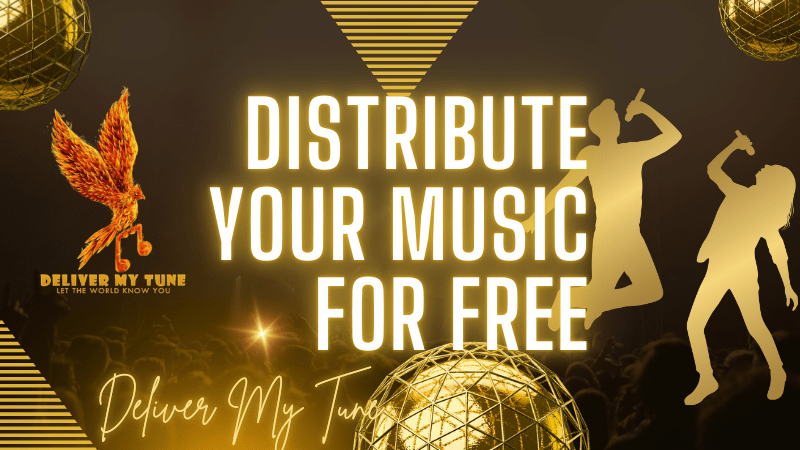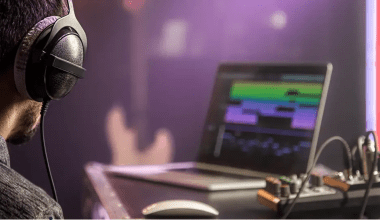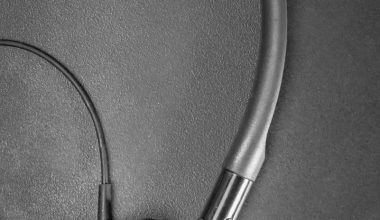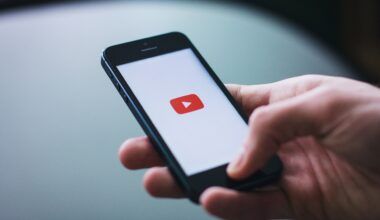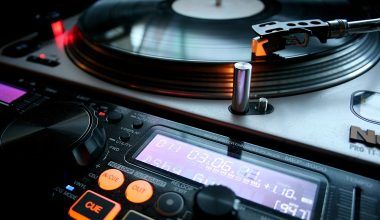Distributing music has become a vital step for artists to reach audiences worldwide. If you want your music to be available to fans across platforms like Spotify, Apple Music, and YouTube, it’s essential to learn how to distribute your music for free. With digital streaming platforms gaining popularity, free distribution gives independent artists a chance to share their music without a financial barrier.
This guide covers everything from choosing the best free platforms to promotional strategies and ways to monetize. You’ll find out how to get your music out there without any costs and make the most of your online presence as an independent artist.
What Is Music Distribution and Why Is It Important?
Understanding Music Distribution
Music distribution is the process of getting your music on various streaming platforms and digital stores, so it’s accessible to audiences worldwide. With the rise of digital streaming, distribution has become easier, and artists don’t need a record label to reach listeners.
Key Benefits of Music Distribution
When you distribute your music for free, you unlock several benefits:
- Global Reach: With digital distribution, your music can be accessed by millions of listeners worldwide.
- Earn Revenue: By reaching listeners, you also open opportunities to earn through streaming royalties and sync licenses.
- Building a Fan Base: Gaining exposure through distribution can help you build a dedicated fan base.
- Professional Growth: Distributing music establishes you as a professional artist, leading to new opportunities for growth.
For emerging artists, distributing music without cost eliminates financial barriers, making it easier to focus on building a fan base and developing your sound.
Chapter 2: Platforms to Distribute Your Music for Free
Top Free Music Distribution Platforms
The music distribution landscape offers several free platforms that allow independent artists to share their work without any cost. Let’s look at some popular options:
- SoundCloud:
- An artist-friendly platform known for a supportive community.
- Allows artists to upload and share music directly with fans.
- Offers analytics to help you understand who’s listening and engaging with your music.
- Audiomack:
- A streaming platform particularly popular among hip-hop and EDM artists.
- Free uploads, with options for monetization and distribution analytics.
- Great for artists looking to grow a dedicated following.
- YouTube Music:
- Upload your music videos or tracks to YouTube, the largest video streaming platform.
- Offers an Official Artist Channel feature that consolidates all of an artist’s music and videos.
- A valuable choice for reaching audiences visually and musically.
- SoundOn by TikTok:
- TikTok’s distribution service helps artists get their music onto TikTok and other major streaming platforms.
- Ideal for artists targeting a younger demographic and seeking viral exposure.
- Routenote:
- Free music distribution to platforms like Spotify, Apple Music, and Deezer.
- Artists can choose between a free plan with a share of royalties or a paid plan for higher earnings.
Each platform has unique features. Choosing the best platform to distribute your music for free depends on your genre, audience, and goals. As you gain experience, you might even explore multiple platforms to maximize reach.
Steps to Start Distributing Your Music for Free
Step 1: Select the Right Distribution Platform
Take time to understand each platform’s strengths. Some platforms cater more to certain genres or demographics, so choose the one that aligns best with your music style and target audience.
Step 2: Prepare Your Music Files and Metadata
Ensure that your audio files are of high quality, ideally in lossless formats like WAV or FLAC. Metadata, including song title, artist name, and album title, is critical for your music to appear in searches and recommendations.
Step 3: Design Eye-Catching Cover Art
Cover art is the first thing listeners see, so make sure it’s high-quality and represents your music well. Most platforms require cover art to be at least 3000×3000 pixels.
Step 4: Create an Impressive Artist Profile
A strong artist profile can attract listeners and help them connect with your work. Include a professional bio, social media links, and any other relevant details to show your unique style and story.
Step 5: Submit and Track Your Release
After uploading your music, monitor its performance. Most platforms offer analytics that can help you understand your audience demographics, track performance, and identify which songs are resonating with listeners.
Chapter 4: Promoting Your Music Post-Distribution
After you distribute your music for free, your work doesn’t end there! Promotion is essential to reach more listeners and build a loyal fan base. Here are key strategies to promote your release:
Social media is a powerful tool for independent musicians. Use platforms like Instagram, Facebook, and TikTok to engage with fans and reach new listeners. Here are some tips:
- Post Short Clips: Share song snippets, music videos, or behind-the-scenes clips.
- Go Live: Live streaming helps you connect with fans in real time.
- Use Relevant Hashtags: Hashtags like #NewMusicFriday or #IndieMusic can increase your visibility.
Collaborate with Other Artists
Collaboration opens up your music to a broader audience by introducing it to other artists’ fans. Work with artists in similar genres or complementary styles for the best results.
Submit Your Music to Playlists
Getting your music on playlists can significantly boost your streams. Platforms like Spotify allow independent artists to pitch their songs for playlists, which can help drive streams and attract new fans.
Leverage Free Promotion Tools
There are several tools available to help independent artists promote their music effectively:
- Feature.fm: Helps artists get on playlists.
- Linkfire: A smart link tool that redirects fans to their preferred streaming platform.
- Hootsuite: A social media management tool to schedule posts and maintain an active presence.
How to Earn Money Through Free Distribution
Streaming Royalties: How They Work
When your music is streamed on platforms like Spotify or Apple Music, you earn a portion of the revenue. Streaming royalties may be small per stream, but they add up over time.
Additional Monetization Options on Free Platforms
Many free platforms allow artists to monetize their music. YouTube, for example, shares ad revenue with creators, and some platforms offer merchandise integration.
Tips to Increase Earnings:
- Encourage Fans to Stream Your Music: More streams mean more earnings, so encourage your fans to listen often.
- Enable All Available Monetization Features: Platforms like YouTube allow artists to earn through ads, memberships, and super chats during live streams.
- Sell Merchandise: Consider offering branded merchandise as an additional revenue source.
Understanding how royalties work will help you make the most of your free music distribution efforts and grow your income as an artist.
Overcoming Challenges in Free Music Distribution
Challenge 1: Visibility in a Crowded Market
With so many artists releasing music every day, standing out can be tough. Focus on developing a unique brand and engaging consistently with your audience.
Challenge 2: Lower Streaming Royalties
While streaming royalties can provide income, they may be insufficient as a primary revenue source. To supplement your income, explore options like live performances, merchandise sales, and brand partnerships.
Challenge 3: Limited Features on Free Platforms
Free distribution services often come with fewer features compared to paid services. Although paid options offer more benefits, free platforms can still be valuable if used effectively.
Frequently Asked Questions (FAQs) About Free Music Distribution
1. Can I Distribute My Music on Spotify for Free?
Yes, several platforms, like Routenote and SoundOn, allow you to distribute your music for free on Spotify and other popular streaming services.
2. How Do Free Distribution Platforms Make Money?
Most free distribution platforms take a percentage of your royalties. Others may offer premium features or subscription plans for artists who want more control over their distribution.
3. Do I Need an ISRC Code to Distribute My Music?
Yes, ISRC codes are required to track and manage royalties. Some free platforms provide ISRC codes, while others require you to obtain your own.
4. Can I Switch Platforms After Releasing Music?
Switching platforms can be challenging and may disrupt your streaming data. It’s generally recommended to stick with a single platform to maintain continuity with your audience.
5. What’s the Best Way to Increase My Streams?
Promoting your music on social media, collaborating with other artists, and submitting your songs to playlists are effective strategies for increasing streams.
6. Is Free Distribution Sustainable Long-Term?
Free distribution is ideal when you’re starting out or working with a limited budget. As your music career grows, you may want to consider paid distribution to access additional features and support.
Tips for Maximizing Your Success with Free Music Distribution
Consistency Is Key
Regularly releasing music keeps your fans engaged and builds momentum. Consider creating a release schedule and sticking to it, so listeners always have something new to look forward to.
Focus on Your Brand
artist and what makes you unique. Consistent branding across your music, social media, and visuals helps listeners recognize and remember you. Here are some tips:
- Create a Unique Visual Style: Use consistent colors, fonts, and designs across your album covers, social media, and website.
- Develop a Personal Story: Share your journey, struggles, and successes with your audience. Personal stories help fans connect with you on a deeper level.
- Engage with Your Audience: Reply to comments, interact with followers, and create polls or Q&As on your social media. Engaging with your audience builds loyalty and strengthens your fan base.
Understand Your Audience
The more you know about your listeners, the easier it becomes to tailor your content and promotions. Free distribution platforms typically provide some analytics to help you understand your audience. Use these insights to make data-driven decisions about your promotion strategy.
- Demographics: Where are your listeners from? Knowing this can help you plan tours, release music in relevant languages, or create content that resonates with your audience.
- Popular Tracks: Pay attention to which songs are performing well. If a particular genre or style resonates with your listeners, consider producing similar content.
- Listening Patterns: Find out when your audience is most active and schedule releases or posts accordingly for maximum engagement.
Collaborate Strategically
Collaborating with other artists is a fantastic way to reach new listeners. Look for artists in your genre with similar fan bases. By collaborating on a song, playlist, or even a live session, you can introduce each other to new audiences and expand your reach.
Common Mistakes to Avoid in Free Music Distribution
Mistake 1: Rushing to Distribute Without Proper Preparation
Before you release your music, make sure everything is polished. This includes high-quality audio files, appealing cover art, accurate metadata, and a complete artist profile. Rushing a release can make you look unprofessional and may hinder your ability to gain fans.
Mistake 2: Neglecting Promotion After Distribution
Simply uploading your music to a platform is not enough. Promoting your music after distribution is essential for reaching a broader audience. Social media, playlists, collaborations, and live sessions can all help amplify your music’s visibility.
Mistake 3: Ignoring the Power of Playlists
Many artists overlook the importance of playlists in generating streams. Don’t hesitate to submit your music to playlists or even create your own playlist to share with your fans. Playlist features on Spotify, Apple Music, and YouTube can bring significant attention to your songs.
Mistake 4: Not Using Data to Improve
Most free platforms offer data and analytics on your music’s performance. Use these insights to improve your music, target your audience better, and understand what works and what doesn’t.
The Future of Free Music Distribution
New Trends in Digital Distribution
As technology advances, new opportunities continue to emerge in music distribution. Some of the latest trends include:
- Social Media and Music Integration: Platforms like TikTok have changed the way music is discovered and distributed. Integrating music with social media trends is becoming a critical part of promotion.
- AI in Music Promotion: AI tools are increasingly helping artists promote their music, analyze listener behavior, and even predict future trends. These tools make it easier for independent artists to reach their audience.
- Blockchain and NFTs: Blockchain technology and NFTs offer new ways for artists to monetize their music and directly connect with fans, although they are still in the early stages of development.
Expanding Opportunities for Independent Artists
The future of music distribution is bright, with more options than ever for independent artists. Free distribution platforms are here to stay, and as the landscape evolves, artists will have even more resources to reach global audiences without relying on traditional record labels.
Additional Resources for Indie Musicians
Essential Tools for Independent Artists
To maximize the benefits of free music distribution, here are some tools and resources that can make the process smoother:
- Canva: For creating high-quality cover art, social media graphics, and other visuals to promote your music.
- Audacity: A free audio editing software that helps you refine your recordings before distribution.
- DistroKid HyperFollow: Even if you’re using free distribution, consider services like DistroKid’s HyperFollow for creating smart links that automatically update with streaming links.
- Mailchimp: An email marketing tool that allows you to keep your fans updated on new releases, upcoming shows, and other news.
- Epidemic Sound: For background music in promotional videos and social media content.
Communities and Networks
Joining communities of fellow independent artists can provide you with support, advice, and collaborative opportunities:
- Reddit: Subreddits like r/WeAreTheMusicMakers are great for connecting with other musicians.
- Facebook Groups: Many Facebook groups are dedicated to music promotion, collaboration, and distribution advice.
- Music Conferences and Events: Attending virtual or in-person music conferences can introduce you to industry professionals and fellow artists, opening up valuable networking opportunities.
A Step-by-Step Checklist for Free Music Distribution
Use this checklist to ensure you’re on the right path:
- Choose the Right Platform: Select the free distribution platform that aligns with your goals and genre.
- Prepare Your Music Files: Ensure your files are high-quality and meet platform standards.
- Create Engaging Cover Art: Design cover art that represents your music and appeals to your audience.
- Fill Out Metadata: Include all relevant details in your metadata for easy discovery.
- Promote on Social Media: Post regularly, engage with followers, and share updates about your music.
- Submit to Playlists: Find relevant playlists and submit your songs for a chance to be featured.
- Monitor Analytics: Track your song performance and adjust your strategy based on the data.
- Engage with Fans: Respond to comments, messages, and show appreciation for your listeners.
By following this checklist, you’ll be better equipped to distribute your music for free and make a lasting impact in the industry.
Conclusion: Embrace Free Distribution and Take Control of Your Music Journey
Distributing your music for free is an empowering way for independent artists to reach audiences without financial constraints. Platforms like SoundCloud, Audiomack, YouTube Music, and TikTok’s SoundOn have made it easier than ever to share your work with listeners across the globe. With consistent promotion, engagement, and data analysis, you can transform your music from a passion project into a growing career.
The world of music distribution is evolving, and as an artist, the power is in your hands to use these resources effectively. Remember that patience, persistence, and creativity are key to building a successful music career. Start distributing your music for free today, and let your sound resonate with audiences everywhere.
Related Articles:
For further reading, explore these related articles:
- 10 Tips to do YouTube SEO of Your Music Video on YouTube
- Promo Cards on Spotify: A Game Changer for Artists
- The Secret to Writing a Hit Song
For additional resources on music marketing and distribution, visit Deliver My Tune.
